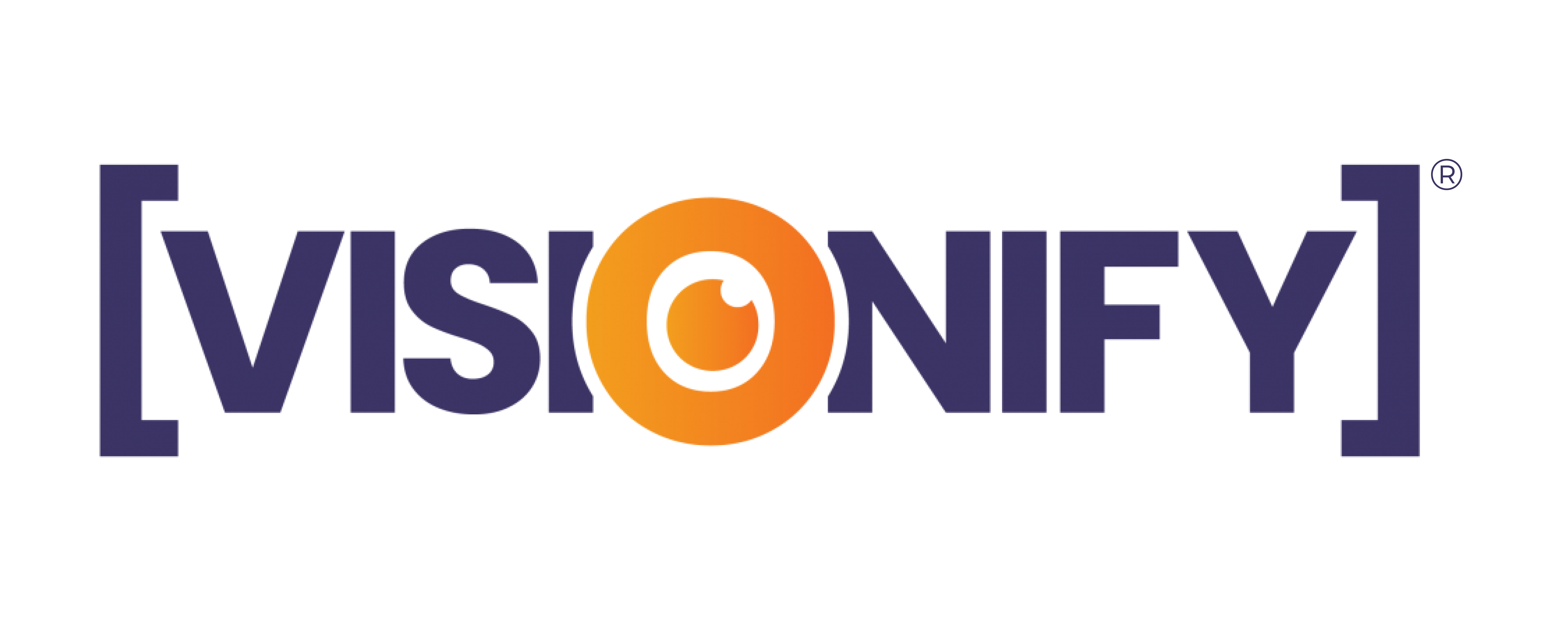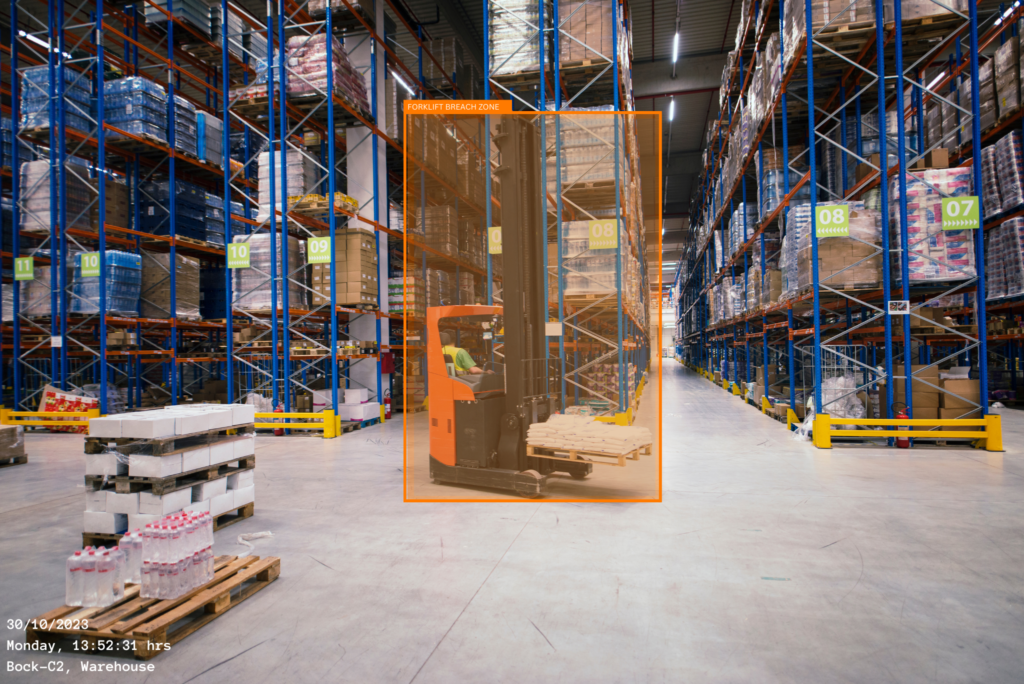In today’s fast-paced warehousing industry, the importance of robust safety measures isn’t just a matter of regulatory compliance—it’s crucial for economic sustainability and a healthy culture that focuses on employee well-being.
Accidents and safety lapses in warehouses don’t just pose risks to personnel; they also lead to other indirect impacts that affect operations, growth, and reputation. Yet, the most immediate and tangible consequence is financial. From direct costs like medical expenses and insurance to lawsuits and legal fines, the economic impact of insufficient safety measures is far-reaching.
This is where the revolutionary role of Vision AI in enhancing warehouse safety comes into play. Vision AI is redefining the approach to safety in warehouses. It provides real-time monitoring and hazard detection, ensuring compliance with safety protocols and proactively preventing incidents before they escalate. This technology isn’t just about ensuring a safe work environment; it’s also a strategic asset that contributes to the economic resilience of businesses. It helps minimize risks, avoid costly accidents, and maintain uninterrupted operations.
As we delve deeper into the impact of Vision AI on warehouse safety, we uncover its multifaceted benefits. It’s not merely a compliance tool but a comprehensive solution that promotes employee safety and contributes to the economic health of the warehousing sector.
Understanding Vision AI in Warehousing
What is Vision AI: Vision AI, also known as Computer Vision, a subset of Artificial Intelligence (AI), analyzes visual data from cameras and sensors. It equips machines with the ability to interpret and respond to visual input like human sight. This technology processes and analyzes images and video feeds, making it possible to extract actionable insights in real-time.
Vision AI in Warehousing: In the context of warehousing, Vision AI becomes an essential tool for safety management. It continuously monitors the warehouse environment, identifying potential hazards such as unauthorized personnel entry into restricted zones, improper use of machinery, or obstacles that could lead to accidents. By providing real-time alerts to supervisors, Vision AI allows immediate corrective actions to prevent accidents and enhance overall safety.
Some common Vision AI apps for Warehouse Safety include:
- Forklift Zone Monitoring
- Pedestrian Safety in Forklift Areas
- Restricted Zone Surveillance
- Empty Pallet Detection
- PPE Compliance Monitoring
Let’s dive into each application and explore how they contribute to elevating warehouse safety standards.
Vision AI Applications in Warehouse Safety
Forklift Zone Monitoring: An integral part of warehouse safety, Vision AI’s forklift monitoring system uses camera feeds to detect and alert when forklifts enter designated restricted zones intelligently. This proactive approach enforces safety protocols and regulates traffic flow, ensuring a safer and more organized warehouse environment.
Pedestrian Safety in Forklift Areas: Vision AI plays a crucial role in safeguarding pedestrians in areas frequented by forklifts. The system promptly identifies any pedestrian inadvertently entering forklift zones by continuously analyzing video feeds. It sends alerts to operators and supervisors instantly within a fraction of a second, significantly mitigating the risk of accidents and enhancing overall safety.
Restricted Zone Surveillance: The system’s expertise extends to monitoring restricted zones within the warehouse. Vision AI effectively controls access to sensitive areas by utilizing time scheduling and real-time camera feeds, preventing unauthorized activity and enhancing security, especially during non-operational hours.
Empty Pallet Detection: Improving operational efficiency, Vision AI’s system adeptly identifies empty pallets in the warehouse. By automating this process with cameras and advanced algorithms, the system optimizes storage space, minimizes manual inspection errors, and enhances the overall workflow.
PPE Compliance Monitoring: Vision AI’s capability to ensure PPE compliance is pivotal in warehouse safety. The system continuously scans for compliance with safety gear requirements, instantly flagging any lapses in real-time. This vigilant monitoring covers essential gear like helmets, safety vests, gloves, and goggles, upholding stringent safety standards and contributing to a safer work environment.
Economic Advantages of Vision AI in Warehouse Safety
1. Cost Savings through Enhanced Safety
The introduction of Vision AI into warehouse operations significantly curtails the incidence and impact of workplace accidents. These are the different areas that witness a notable decrease:
Reduced Accident Incidence: Vision AI lowers workplace accidents by monitoring hazards like improper forklift usage and PPE non-compliance. This decreases medical and healthcare costs associated with accidents.
Legal and Compliance Advantages: Vision AI ensures adherence to safety regulations, minimizing legal fines and penalties. Its comprehensive documentation aids in safety audits, reducing legal risks.
Technological Scalability: Vision AI’s adaptability to different warehouse sizes and integration with existing systems provides a cost-effective solution for safety enhancement, avoiding heavy infrastructure investments.
Insurance Premium Benefits: Improved safety records with Vision AI can result in lower insurance premiums due to fewer claims, offering long-term financial savings.
2. Operational Efficiency and Cost-Effectiveness
Vision AI is more than a safety tool; it catalyzes operational efficiency. Refining key processes like monitoring forklift zones and identifying empty pallets streamlines warehouse operations. The result is a more productive workflow, improved inventory management, and reduced time and resources devoted to manual oversight. These efficiencies transcend safety improvements, contributing significantly to warehouse operations’ overall cost-effectiveness and productivity.
Conclusion: Vision AI – Charting the Future of Warehouse Safety
Predictive Safety: A Game-Changer
Vision AI redefines warehouse safety, transitioning from real-time monitoring to predictive analysis. It’s about foreseeing risks and using data-driven insights to tackle safety concerns. By scrutinizing patterns in operational data, Vision AI pinpoints potential issues, from equipment malfunctions to inefficiencies, that could escalate into safety hazards.
Adapting and Advancing
Warehouse operations are dynamic and continuously evolving with technological advancements. In this ever-changing landscape, Vision AI remains a crucial innovator. Its ongoing enhancements in precision and integration make warehouses safer and more intelligent. As Vision AI’s capabilities grow, they promise to elevate the safety and efficiency of warehouse environments.
The Road Ahead
Looking forward, the potential of AI in enhancing warehouse safety is immense. Future developments could see deeper IoT integration, refined AI algorithms offering detailed safety insights, and synergetic operations between AI and human workers, balancing safety with operational efficiency.
Vision AI is leading the journey towards warehouses that are not just efficient but inherently safe. As AI technology matures, its role in ensuring the safety and well-being of warehouse personnel, coupled with operational optimization, is set to become increasingly pivotal. This marks a new chapter in the narrative of workplace safety, with Vision AI as a critical protagonist shaping safer, more efficient warehousing futures.


